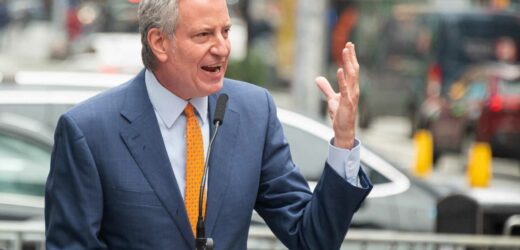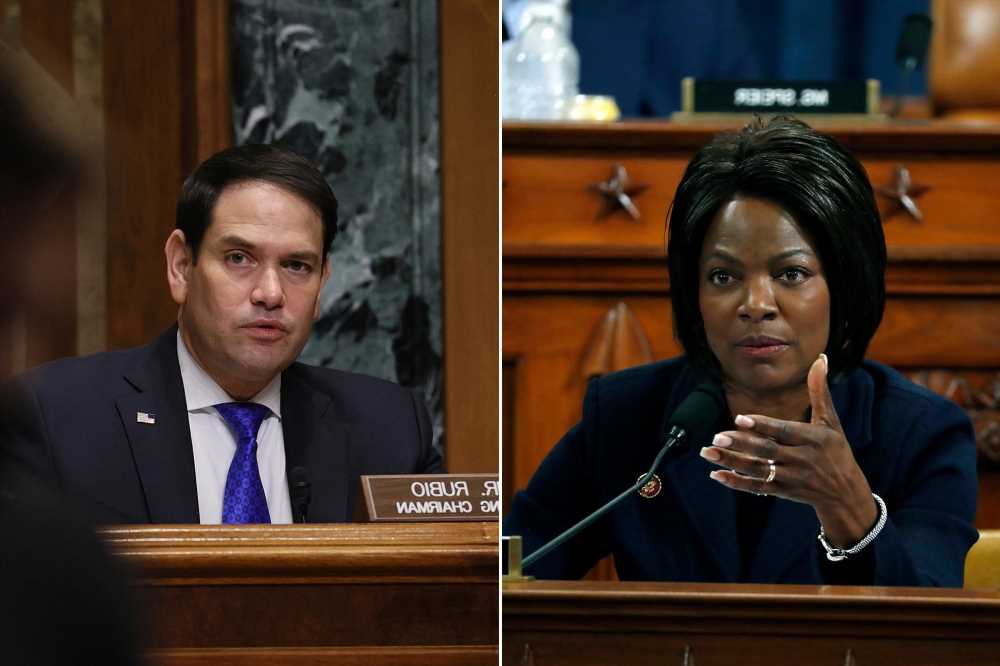More On:
city hall
Lefty mayoral candidate bribed inspector, lied about it: documents
Mayor de Blasio rides Citi Bike from UES to City Hall
MTA chief accuses City Hall of hiding subway cop numbers, de Blasio out of touch
De Blasio will lower speed limits on 45 miles of NYC streets
Looks like Mayor Bill de Blasio’s “spending like a drunken sailor” is gonna leave the Big Apple with a nasty hangover.
The city’s Independent Budget Office projects that more than $4 billion of the city’s federal stimulus money is going to programs designed to continue well after the aid dries up — adding more fuel to criticism of de Blasio’s recent COVID-relief spending spree.
That accounts for roughly one in four dollars of the $15.8 billion in federal funds the Big Apple has been allocated as part of the coronavirus rescue package passed by Congress and signed by President Biden.
The spending spree comes as the IBO projects the coronavirus pandemic has taken a $17 billion bite out of the city’s tax revenues between 2021 through 2024 — a massive decline that could imperil the Big Apple’s future finances, the agency warned in its report.
“The loss of such a large amount of revenue — over 6 percent of estimated tax revenue through 2024 — could greatly hinder the ability of the city to maintain its current level of services,” the watchdog warned in its report.
The $4.2 billion in federal stimulus funds flagged by the IBO is being used to undo a raft of budget cuts forced by tax shortfalls due to the pandemic — including replacing $1.3 billion in needed labor savings, allowing officials to divert nearly $600 million in tax money that would typically fund the Sanitation and Correction departments, providing $149 million to hire new city employees and restoring $28 million in cuts to trash pickups.
All told, the budget watchdog projects that de Blasio’s spending plans for 2022 will cost $98.8 billion — slightly more than City Hall’s record projection of $98.6 billion.
The infusion of federal support means the city budget could see a surplus of as much as $1.3 billion in 2022, however deficits of at least $3.5 billion are forecast for 2023, 2024 and 2025.
Good government groups and budget watchdogs have slammed de Blasio’s budget proposal for not setting aside more federal funds for future years, leaving his successor with those yawning budget gaps.
“He’s spending like a drunken sailor and leaving it to the next mayor to be sober,” said former president of the Citizens Budget Commission, Carol Kellermann, told The Post last week.
De Blasio’s wild spending aside, the IBO predicts the arrival of the coronavirus vaccines — coupled with the ongoing relaxing of pandemic-related restrictions — will help speed the economic recovery across the five boroughs.
The budget watchdog now expects the city’s economic output in gross dollars to exceed its pre-pandemic levels later this year.
And, it now projects that employment in the Big Apple will return to 2019 levels by 2024 — a year sooner than it previously projected.
The IBO chalked up the massive lag between the recovery in economic output and employment figures to the city’s heavy reliance on tourism — pointing to the possibility that virtual meetings may lead to permanent cutbacks in business travel and the continued spread of the coronavirus overseas would dampen international tourism.
“We do not expect that pre-pandemic levels of employment in leisure and hospitality will be attained [by 2025],” the IBO warns.
City Hall recently announced a new $30 million tourism ad campaign in a bid to try and head off permanent declines in the sector, funded by stimulus dollars.
“The city just passed through its most difficult financial stress test in generations and came out on top thanks to our aggressive vaccination campaign, strong fiscal management, and the robust federal stimulus,” said de Blasio spokeswoman Laura Feyer.
“The entire point of the stimulus is to push economic and revenue growth which will drive New York City’s recovery for years to come.”
Share this article:
Source: Read Full Article




